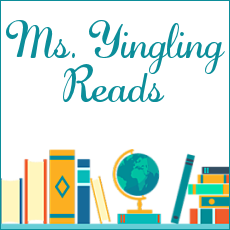 I finally broke down and read In the Land of the Lawn Weenies, which certainly does Louise Rennison proud in an attempt to force librarians to say embarassing things. I have added it, as well as Invasion of the Road Weenies, to my list to purchase, because the stories all embrace the warped, icky, 12-year-old boy sense of "Ewwww". I will recommend it to students who don't like to read anything that isn't gross, as well as to teachers who would like something to read aloud. Very clever, and for readers who won't read anything, these are good starters. From here, maybe I can move them into R.L. Stine, and Paul Zindel's monster books.
I finally broke down and read In the Land of the Lawn Weenies, which certainly does Louise Rennison proud in an attempt to force librarians to say embarassing things. I have added it, as well as Invasion of the Road Weenies, to my list to purchase, because the stories all embrace the warped, icky, 12-year-old boy sense of "Ewwww". I will recommend it to students who don't like to read anything that isn't gross, as well as to teachers who would like something to read aloud. Very clever, and for readers who won't read anything, these are good starters. From here, maybe I can move them into R.L. Stine, and Paul Zindel's monster books.Other sucessful creepy stories that circulate well in my library are:
Horowitz, Anthony. Horowitz Horror, More Horowitz Horror.
Horowitz, Anthony. Horowitz Horror, More Horowitz Horror.
Schwartz, Alvin. Scary Stories to Tell in the Dark, More Scary Stories to Tell in the Dark, and Scary Stories 3
San Souci, Robert. Dare to Be Scared, Double Dare to Be Scared (and some Short and Shivery that I intend to look into!)




















































